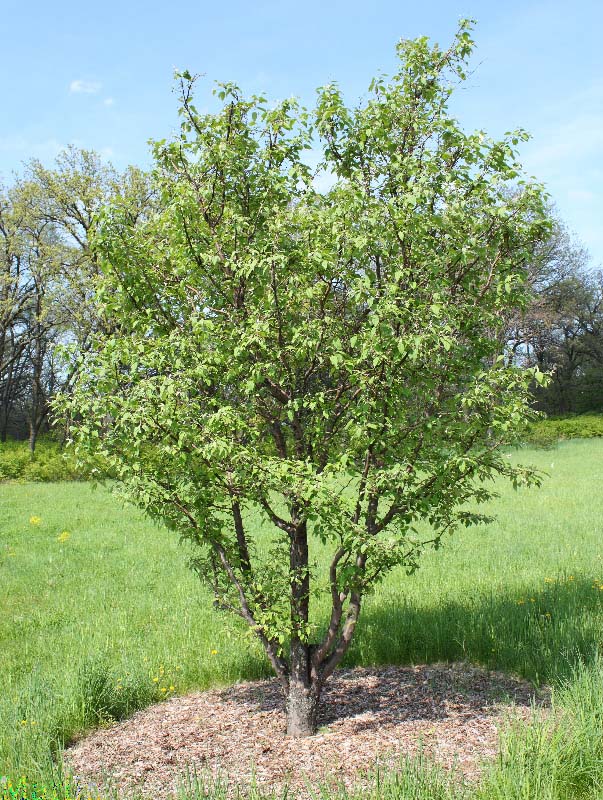 |
Yunnan Crabapple – Malus yunnanensis Rose Family: Rosaceae | Rosaceae Index Forms dense canopy of green foliage turning gold in fall. Fruit persists well into winter. |
Custom Search
|
|
Lancelot Crabapple is a compact, upright crabapple covered with snowy-white blooms in spring and crisp green foliage throughout summer. Fall shows gold foliage giving way to a golden veil of fruit, which persists well into the new year. This is an excellent crabapple for small areas.
Crabapples (Malus) are the most stunning of spring flowering trees for Midwest landscapes and are a great choice for the home garden. Many of them are small in stature and can maintain visual interest throughout the changing seasons (spring flowers, fall fruit, textured bark and craggy branches in winter). There are about 55 different species in the genus Malus, and there are innumerable cultivars available in the landscape trade. The Arboretum's Crabapple Collection was started in 1924. Part of this collection on the West Side participated in the National Crabapple Evaluation Program which evaluated new and disease-resistant varieties. As a result of the multi-year evaluation and additions, it has transformed into the West Side Malus collection which now contains 60 different kinds and over 140 specimens. [3]
Crabapples are versatile, small, ornamental trees used in the urban landscape. Crabapples bloom in spring, usually in May, bearing flowers that vary a great deal in color, size, fragrance, and visual appeal. It is common for flower buds to be red, opening to pink or white flowers. The fruit ripens between July and November, and varies in size from ¼â€to 2†long or wide. Crabapples thrive in full sun and grow best in well drained, slightly acidic soils (pH 5.5-6.5); however, they will grow well in many soil types. Most crabapple selections tolerate the cold winters and hot, dry summers prevalent in the Midwest.
For many years, crabapple cultivars have been selected on the basis of their flowers, but with some cultivars, undesirable features, such as disease problems and early fruit drop, outweigh their short-lived spring beauty. No single cultivar can fulfill every landscaping need. Consider the following information when choosing a crabapple cultivar for your landscape. [3] |
References
|
| Tree Encyclopedia / North American Insects & Spiders is dedicated to providing scientific and educational resources for our users through use of large images and macro photographs of flora and fauna. |
 |
Family Rosaceae – Rose Family; Fruit Trees Containing Hawthorns, Apples, Pears, Cherries, Plums, Peach, Almond, Mountain-Ash and Whitebeam. Rosaceae is a large family of plants with about 3,000 species in ~100 genera. Crabapple and other fruit trees provide some of our most outstanding flowering ornamentals, as well as food for birds and other wildlife. Tree Encyclopedia | Tree Index | Fruit Tree Index |

